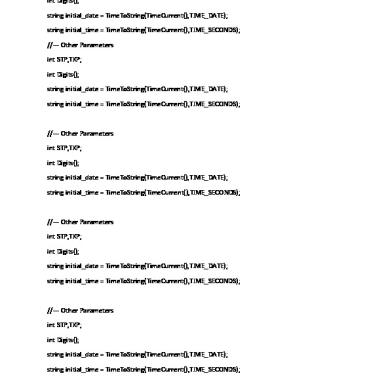Power Transmission In Floating Power Plant.docx
This document was uploaded by user and they confirmed that they have the permission to share it. If you are author or own the copyright of this book, please report to us by using this DMCA report form. Report DMCA
Overview
Download & View Power Transmission In Floating Power Plant.docx as PDF for free.
More details
- Words: 390
- Pages: 2
Power Transmission in Floating Power Plant As the power is produced in mid oceanit has to be transported long ddistance so that it can be useful for the public domain. For transmitting that much amount power HVDC transmission supply is used. Before seeing how the transmission work below the brief introduction of HVDC transmission system is. High voltage direct current (HVDC) power systems use D.C. for transmission of bulk power over long distances. For long-distance power transmission, HVDC lines are less expensive, and losses are less as compared to AC transmission. It interconnects the networks that have different frequencies and characteristics. AC power is generated which can be converted into DC by using a rectifier. In HVDC substation or converter substation rectifiers and inverters are placed at both the ends of a line. The rectifier terminal changes the AC to DC, while the inverter terminal converts DC to AC. In floating power plant direct current is transmitted down a primary submarine conductor and rewuires a return path provided by a another conductor or via sea water using anode/ cathode.As the power first generated is AC and converted to DC, the diameter of the power cable varies depending on the current carrying capacity and amount of armor protection. These protection includes the covering layer of insulated materials such as Jute, Paper, thread linings etc.… cables can be buried in a narrow trench which is below te turbile of the generating system. There are alos alternative methods to protect the cable because there is always a danger on the waer and tear of the cables. These adjustments are made so that the wear and tear of the cable will be very less. This includes rock placement, articulated pipe, concrete mattress.
Depending on the cable design the electromagnetic fields may vary. The disadvantage of burying cable is that it affects marine life in a narrow corridor, but disturbance is temporary. Damage to submarine cable is mainly caused by human activities, less than 10% of cable faults are due to natural hazards like submarine earthquakes, fault lines and related landslides, current and extreme weather conditions. Though submarine cable is costlier than usual overhead transmitting the good thing is it doesn’t need towers and saves cost. Moreover as they are laid under sea it doesn’t hampers the natural beauty of the marine system from above.
Depending on the cable design the electromagnetic fields may vary. The disadvantage of burying cable is that it affects marine life in a narrow corridor, but disturbance is temporary. Damage to submarine cable is mainly caused by human activities, less than 10% of cable faults are due to natural hazards like submarine earthquakes, fault lines and related landslides, current and extreme weather conditions. Though submarine cable is costlier than usual overhead transmitting the good thing is it doesn’t need towers and saves cost. Moreover as they are laid under sea it doesn’t hampers the natural beauty of the marine system from above.
Related Documents

Power Transmission In Floating Power Plant.docx
April 2020 6
Power Transmission
June 2020 5
Bulk Power Transmission
December 2019 24
Floating-power-plant[1].docx
May 2020 1
Power
October 2019 25
Power
May 2020 11More Documents from ""

Power Transmission In Floating Power Plant.docx
April 2020 6
Hsw Network Framework
August 2019 10
Cpu
April 2020 19
Project_report_m.com_2_khushal.doc.pdf
May 2020 23
